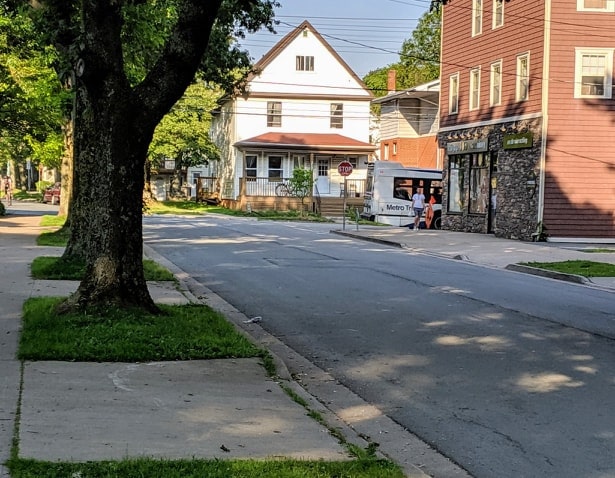
KJIPUKTUK (Halifax) – Two pedestrian fatalities and an additional two serious incidents involving cyclists inside a week is too much for any one of us to bear. A city which is a liability for its most vulnerable road users has lost its way, its soul and spirit.
In our small city there are always connections to those tragically affected, and this time it was Richard Zurawski who announced it was a family friend, Joy Ruth Mendleson, who died after being struck by a woman driving an SUV last Thursday on Oak Street. My condolences to any readers touched by this double tragedy.
Testimony has been provided time and time again on HRM Safe Streets for Everyone from parents of children, cyclists and pedestrians that our roads are not fit for purpose. Mobility is severely challenged by wide roads that are designed like Highways, and by unsafe crosswalks causing constant close calls. We fear for our children’s safety when they make their way to school or play outside. It would be nice if we could look both ways and proceed only when all traffic has stopped but that is no longer something we can expect on our increasingly busy, wide and fast roads.
So what can we do to make our streets safe for all to use?
We could start by looking at them in a new light and consider if they are fit not just for traffic flow, but also for everyone else. Are intersections so wide that drivers can turn at high speeds into the path of pedestrians or cyclists? Are our crosswalks safe to use – do they ensure drivers slow down as they approach and see lights placed within their sightlines warning them that a pedestrian is crossing? Do they have a safe pedestrian refuge island if they’re on fast main roads? Are crosswalks too far apart? Can people cross the road safely to get to bus stops? Are there sidewalks? Are traffic lanes too wide and numerous, encouraging drivers to speed? Do our traffic lights stop drivers from turning right or left into the path of pedestrians by giving them a red light while pedestrians cross?
Too often in HRM the answers to these numerous questions and more is no.
Issues flagged up in our Crosswalk Safety Report of 2007 relating to distractions and obvious defects in our crosswalk infrastructure have just not been addressed. We have been collecting and collating incident data for years to produce annual safety reports informing us which locations are the most dangerous and what is causing the incidents, but we have not acted on that well organised data to make essential changes that would reduce incidents.
Seattle took an honest look at its own infrastructure and realised only a radical new approach could make its streets safe for all. They made the call to effect change sooner rather than later by using inexpensive measures to slow traffic and shorten crossing distances for pedestrians at intersections, even removing traffic lights at some intersections to make sure the city could become safer, liveable and fit for all modes of travel.
We could do similar things here with inexpensive but highly effective measures such as in-street crosswalks signs, using bollards to create bump-outs at intersections, pedestrian refuge islands made from recycled materials and simply removing right on red permissions and adjusting our traffic lights so turning traffic has a red light while we cross.
To tackle this issue we need a plan which contains countermeasures, or infrastructure safety solutions: details of what can be applied when and where, and at what cost. Despite our yearly reports, promises and data aplenty, we have seen no progress to effect change across our municipality other than the welcome voluntary efforts from the Crosswalk Safety Society of Nova Scotia.
It must surely be time to move things forwards with much more urgency. Involve outside help from specialist engineers if necessary. Commit the $25 million funds we no longer need for the minimum bike grid due to federal and provincial funds to road safety efforts that will benefit all users. Amend our traffic calming policy so we can address speeding traffic on collector and artery routes with road diets. Move forwards with multiple initiatives that will enable all of us to enjoy our streets and not fear serious injury or death from every journey.
Footnote: While writing this article I hear that a pedestrian has been hit at the Alex Street/Main Avenue intersection. I cross here every week with my children and, like so many of our crosswalks, it is very difficult to use safely due to the high speed of traffic on Main Avenue.
If you walk, cycle or use a wheelchair and are affected by road safety issues, please join HRM Safe Streets for Everyone. If your local crosswalk needs a crosswalk flag, please contact the Crosswalk Safety Society. Please remember to report issues affecting your safety to our municipal authorities using the 311 service.
With a special thanks to our generous donors who make publication of the Nova Scotia Advocate possible.
Subscribe to the Nova Scotia Advocate weekly digest and never miss an article again. It’s free!



